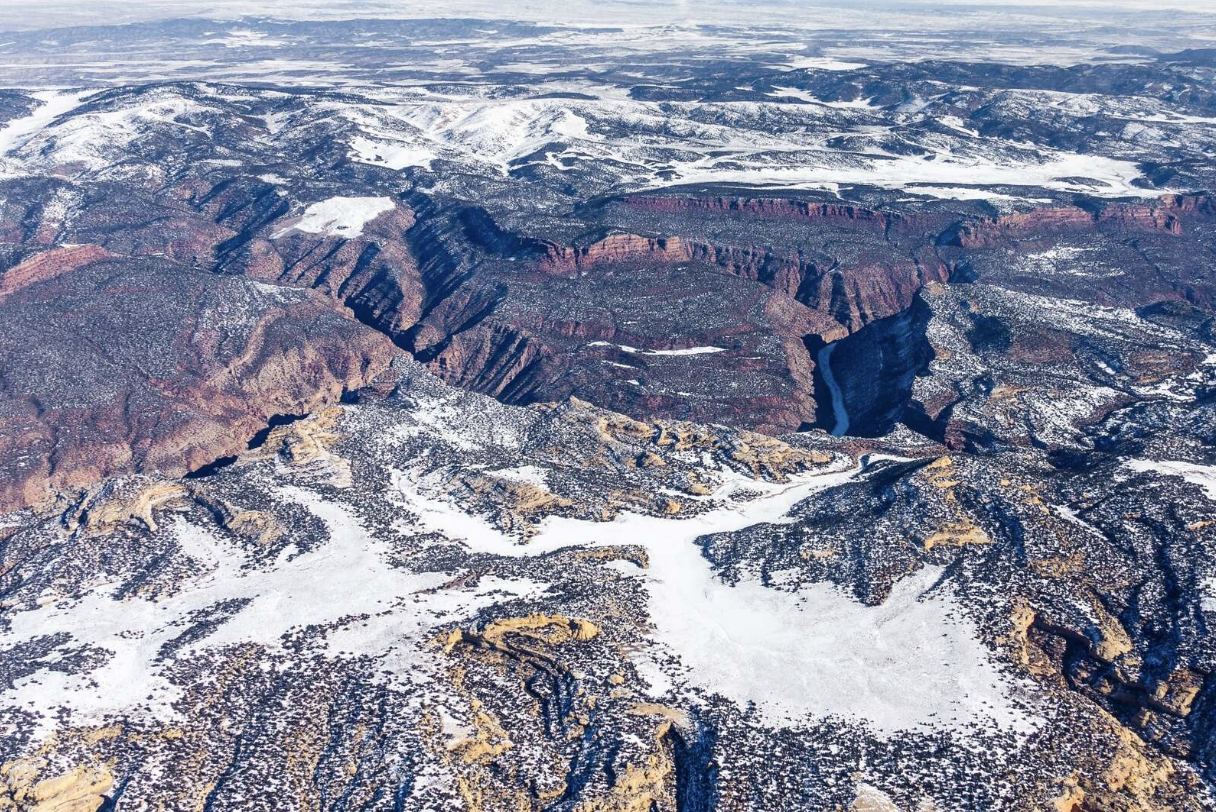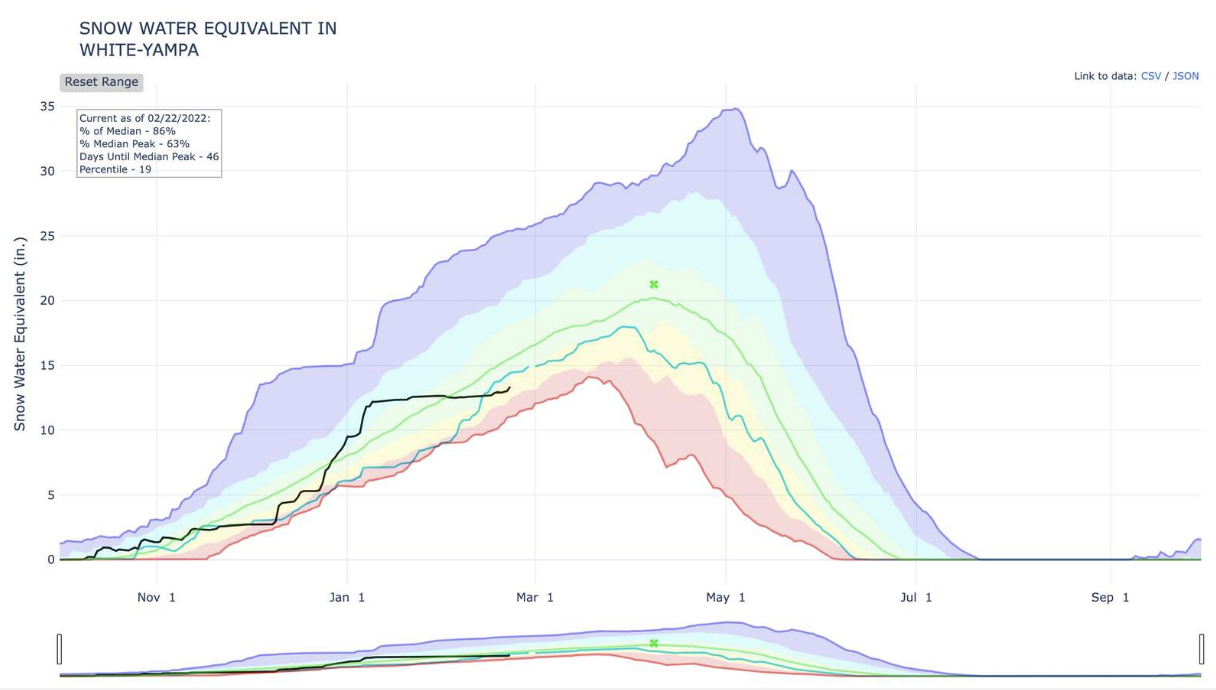
As industries across the Western Slope continue to watch snow and water levels as the days until summer close in, the Colorado River District hosted water experts Tuesday to discuss what certain data points mean and how they reflect the current state of Colorado’s water levels.
“With climate change upon us and the effects of multi-decadal drought, we can see that for every one degree of Fahrenheit rising temperature, streamflow can be reduced in the Colorado River Basin between 3% and 9%,” said Colorado River District’s PR and Media Specialist Lindsay DeFrates on a virtual webinar. “As much as we do love seeing the snow out by the window right now and more on the way, hopefully, we have to recognize that the state of Colorado is still across the board in some form of drought conditions.”
Before Monday, snow in 2022 had been sparse for the northwest corner of the state. According to the USDA’s Natural Resources Conservation Service, the White and Yampa River Basin is currently at 86% of the median snowpack level since 1991. To get this median, the NRCS takes all of the snow patterns over the past 30 years and finds the middle of all of the peaks and snowpack levels. This median is often used as a standard to measure how dry a year is.
DeFrates said that the Colorado River District focuses on snowpack during the winter months in order to see how to anticipate river levels in the warmer seasons.
“It is the most essential storage that we have in the West, because it allows the streams and rivers to fill throughout the season instead of depending entirely on rainfall,” she said. “So it’s sort of a delayed release. That’s why the health of the snowpack that we’re going to dive into today is so important. It allows demands to be met even late in the summer.”

This winter, snow water equivalent (SWE) levels for the White-Yampa Basin are currently at 13.4 inches as of Tuesday (the latest available data). SWE is a commonly used measurement used by hydrologists and water managers to gauge the amount of liquid water contained within the snowpack. In other words, it is the amount of water that will be released from the snowpack when it melts.
The SWE median for that same date is 15.5 inches, and this year is slightly behind last winter’s levels, which was at 14.4 inches. The median peak of these levels (meaning the highest amount of SWE levels before they dip) usually happens around April 8. During the most recent drought, this peak has happened earlier in the year, and it sometimes does not reach that average peak, either. In 2021, the peak of snowpack happened during the last week of March, topping at 18 inches. The median peak is 23.1 inches.
Jeffrey Deems, cofounder and Chief Technical Officer of Airborne Snow Observatories, said that with the off-and-on pattern of snow that the Western Slope has experienced since October, it’s important to get a full picture of how to look at the numbers when it comes to snowpack.
“One thing to keep in mind is that the percentage of normal numbers based on the SNOTEL network and snow course measurements are used for runoff prediction,” Deems said. “They are not a SWE volume measure. And so they’re used in a statistical forecasting method by the NRCS to project April through July runoff.”
Because of snow storms that are forecast to continue throughout this week, each basin — including the Yampa River Basin — will get a boost in their levels if the trend continues, but according to current snowpack data, 2022 is reflecting a similar pattern that the Western Slope witnessed in 2021.
Across the entire western part of the United States, the trend of a multi-decadal drought is continuing. Gov. Jared Polis visited Craig last summer to speak with local ranchers about the drought’s impact on the Yampa Valley. Currently, agriculture workers in different facets of the industry are looking to see if 2022 might provide some relief.
“When our communities depend on our local agricultural producers, and recreation and industry economies, the health of the snow leading to the health of the river is one of the most important things for us to keep an eye on,” DeFrates said.